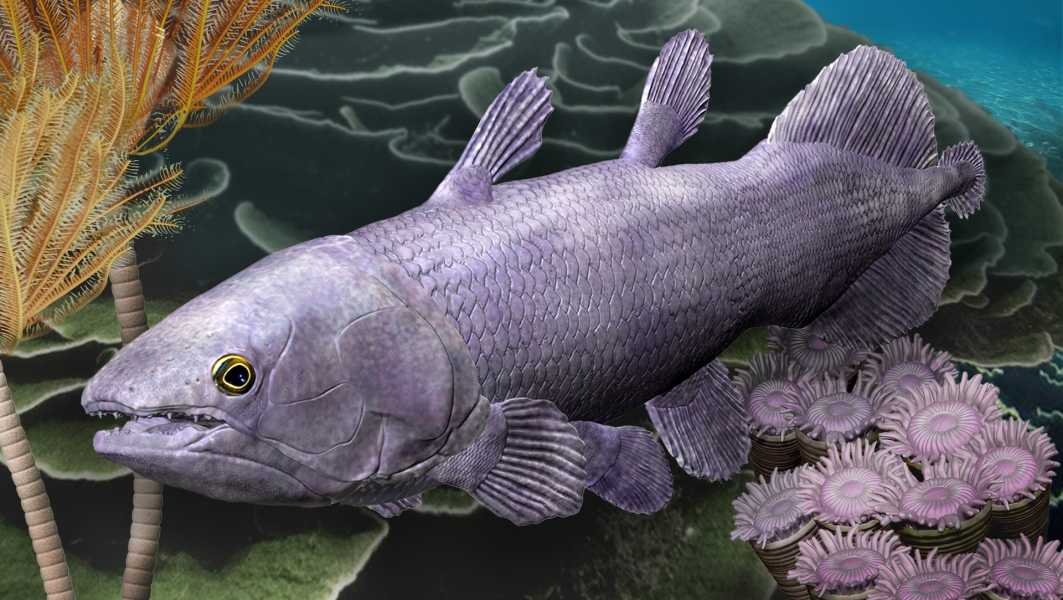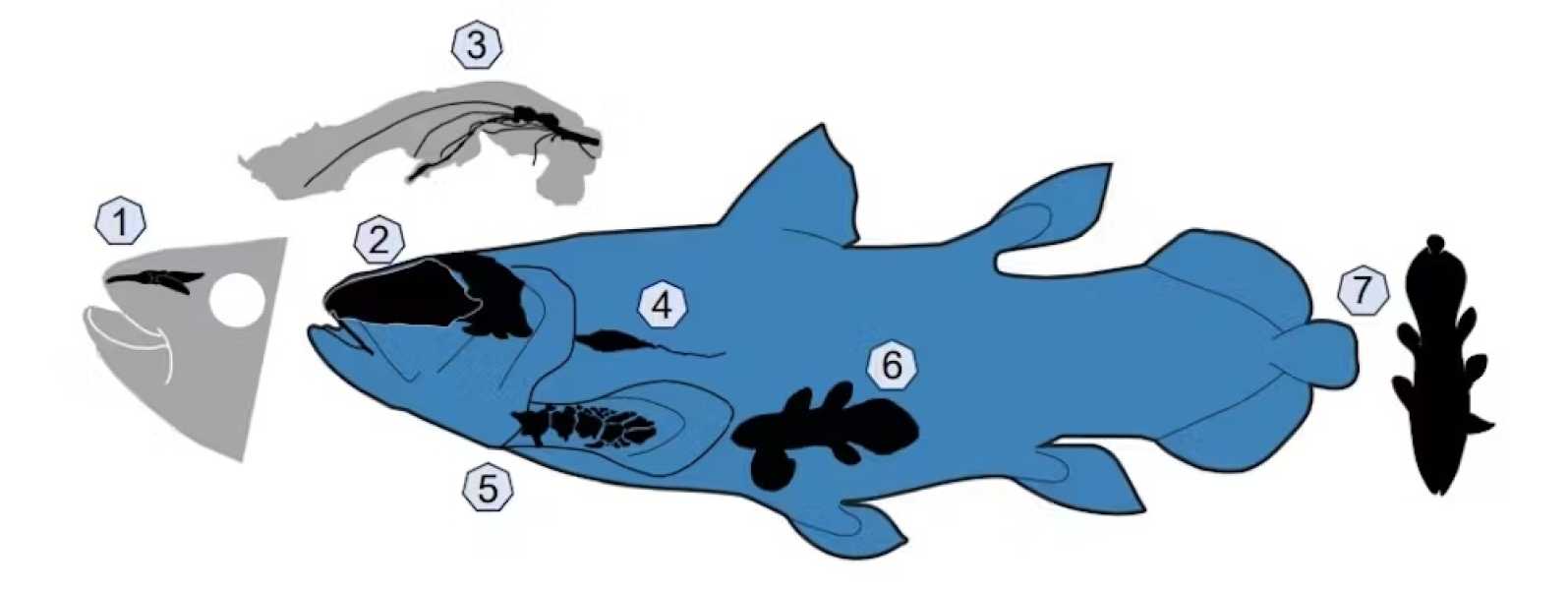
The coelacanth Ngamugawi virngarri in its Devonian reef habitat. (Image credit: Katrina Kenny)
What are the common features of ginkgo (tree), nautilus (mollusk), and coelacanth (fish)?
Although they bear no superficial resemblance and are not closely related, their evolutionary histories are remarkably similar: these creatures are known as “living fossils.” In other words, they appear to have escaped the changes that typically occur during evolution over time.
For the past 85 years, the coelacanth has been called a “living fossil” because it evokes memories of a bygone era when dinosaurs dominated. The fish belong to the sarcopterygian family, which also includes lungfish (fish with lungs) and tetrapods, which include humans. Tetrapods are vertebrates (animals with a backbone) that have specific anatomical features, including a humerus (a bone in the front limb), a femur (a bone in the back limb), and lungs.
Coelacanths are of great interest to scientists, both because of the fascinating story of their discovery and because of their status as a “living fossil.” Moreover, the two living species of coelacanth that survived this long evolutionary period are both endangered.
But can the coelacanth really be called a “living fossil”? And what can coelacanth fossils tell us about this evolutionary oddity?
In this article, based on the research of a paleontologist, evolutionary biologist, and ecological modeler, we examine the 410-million-year evolutionary history of coelacanths from a new perspective. Using cutting-edge technology and innovative analytical techniques, we aim to gain a deeper understanding of the evolution of these fascinating species, often referred to as “living fossils.”

The main characteristics of the coelacanth and some fossil coelacanths are: (1) a rostral organ used to locate prey; (2) a neurocranium divided into two halves; (3) a small brain occupying approximately 10 percent of the cranial cavity; (4) a rudimentary lung; (5) several bones in the fins; (6) females giving birth to fully formed young; and (7) an additional tail paddle that allows for an upright posture. A significant discovery in Western Australia
Our study, recently published in the journal Nature Communications, identified and described fossils of an extinct 380-million-year-old coelacanth species found in Western Australia.
Sourse: www.livescience.com





